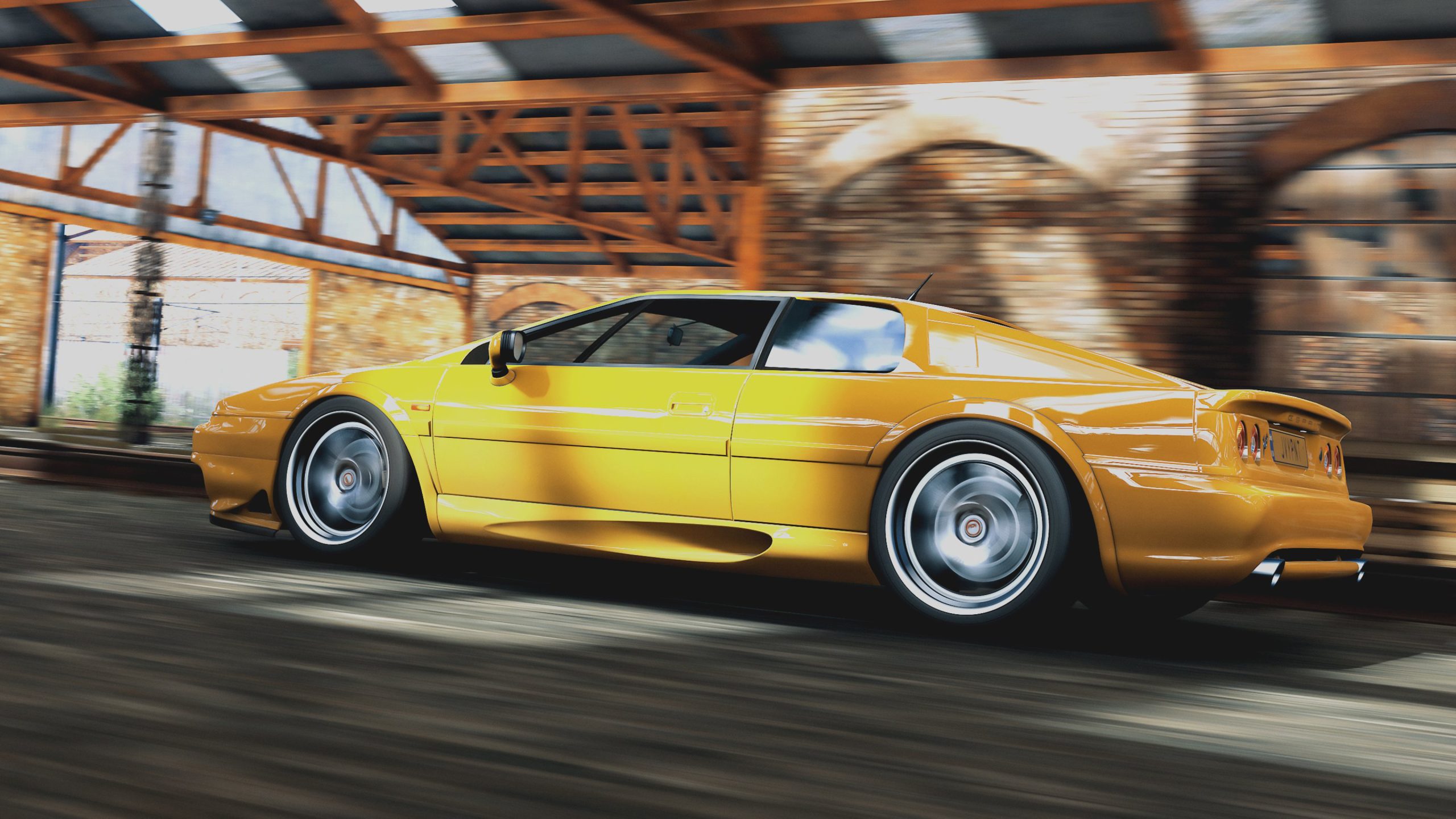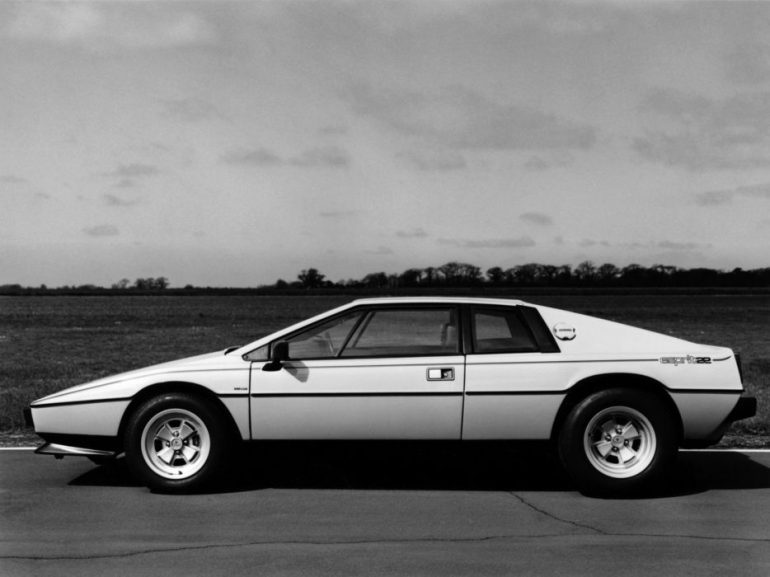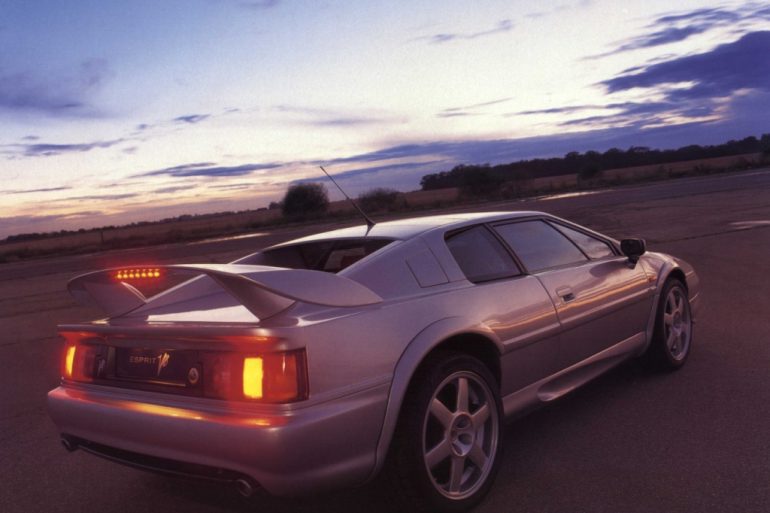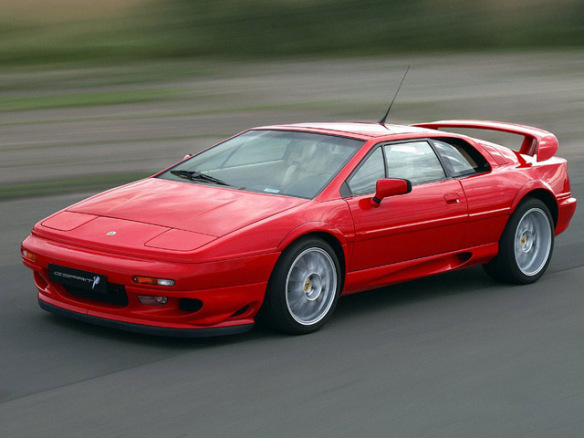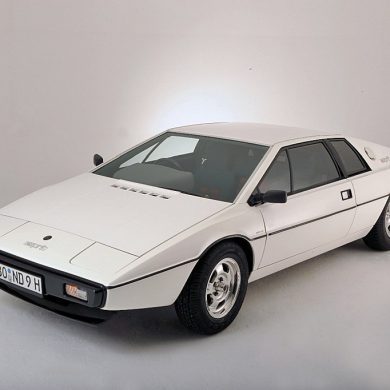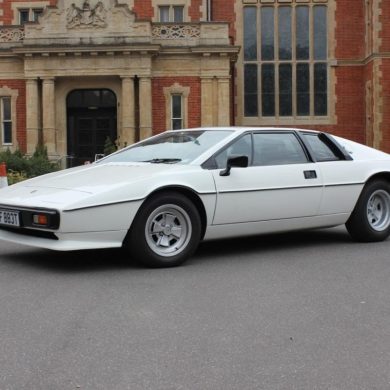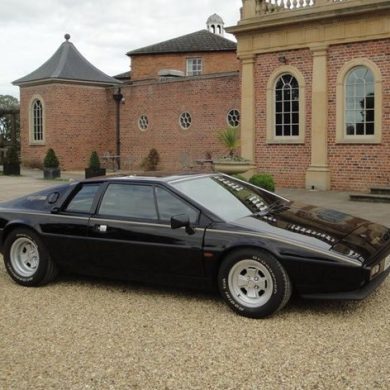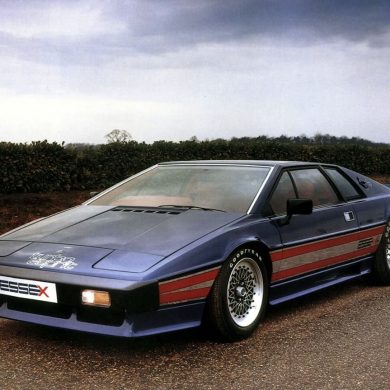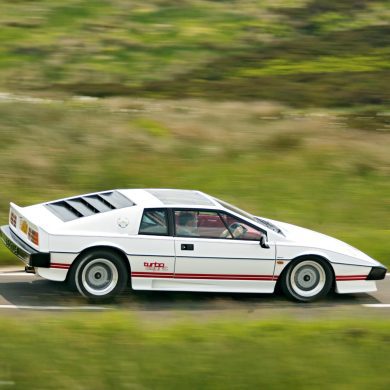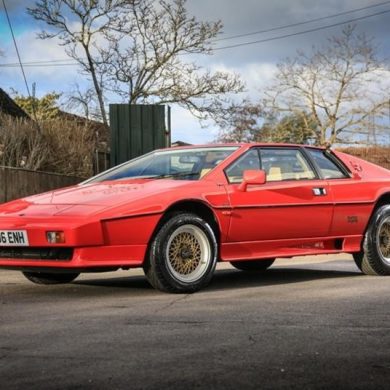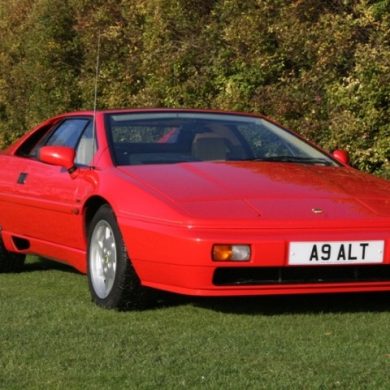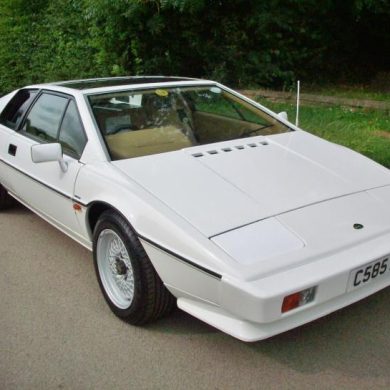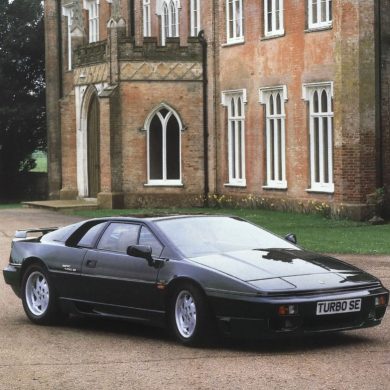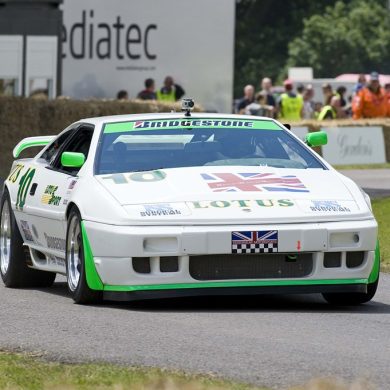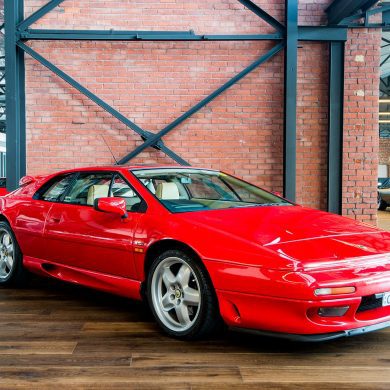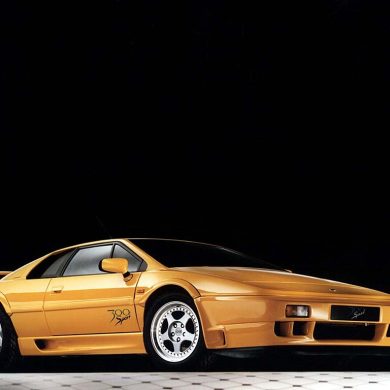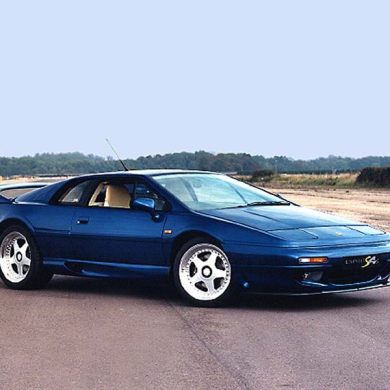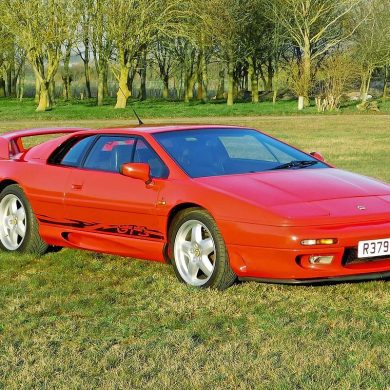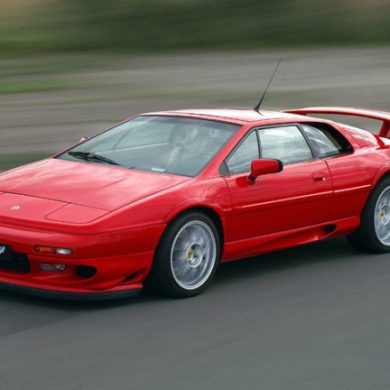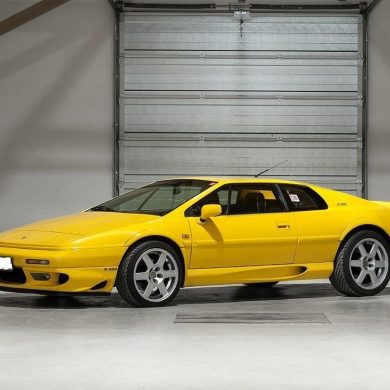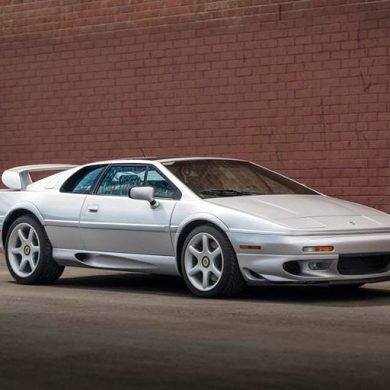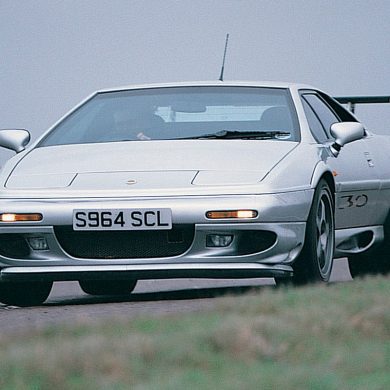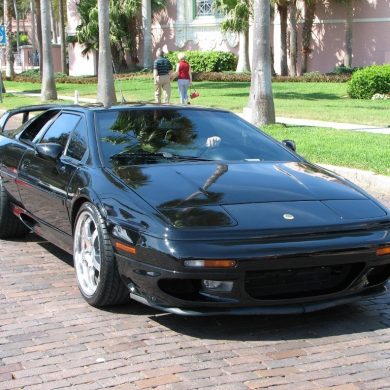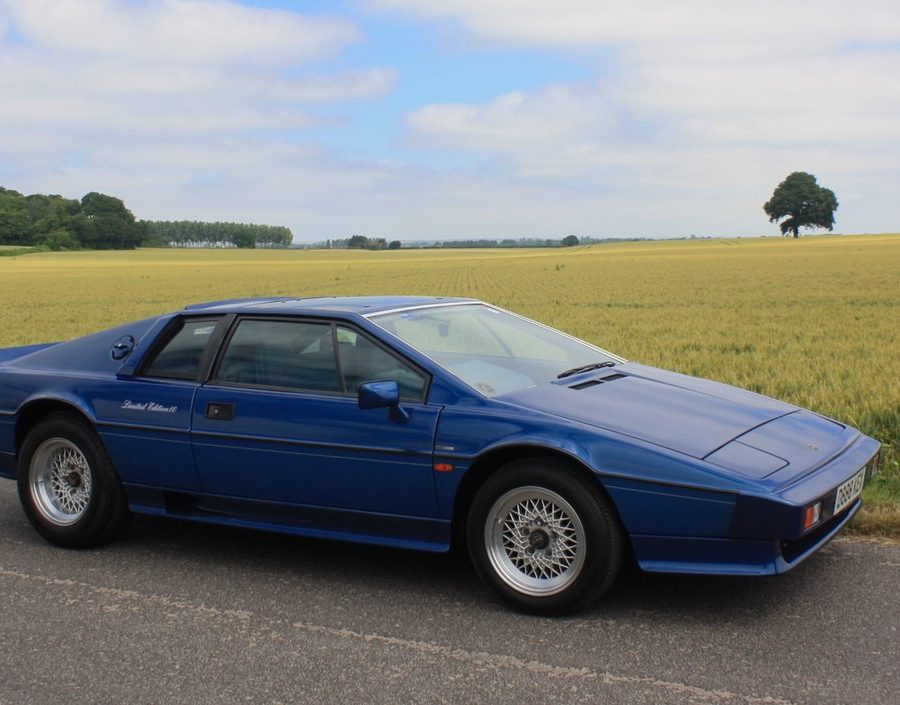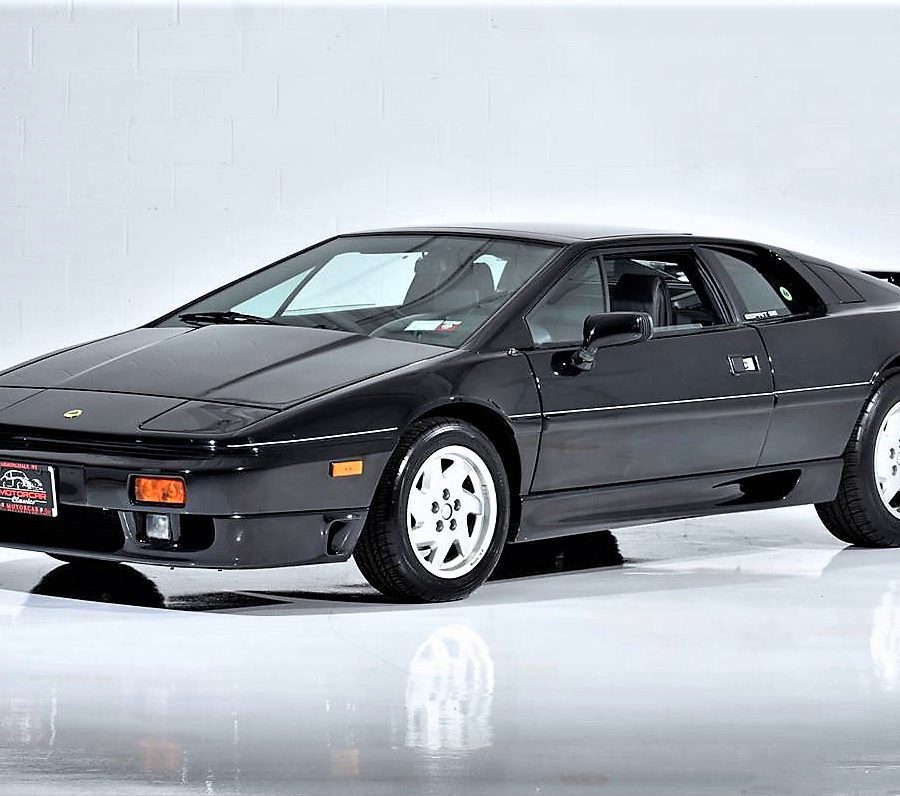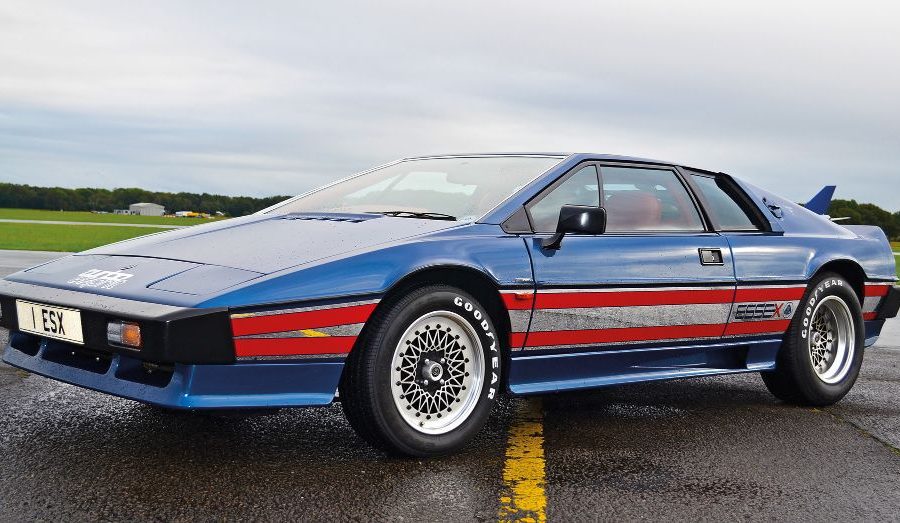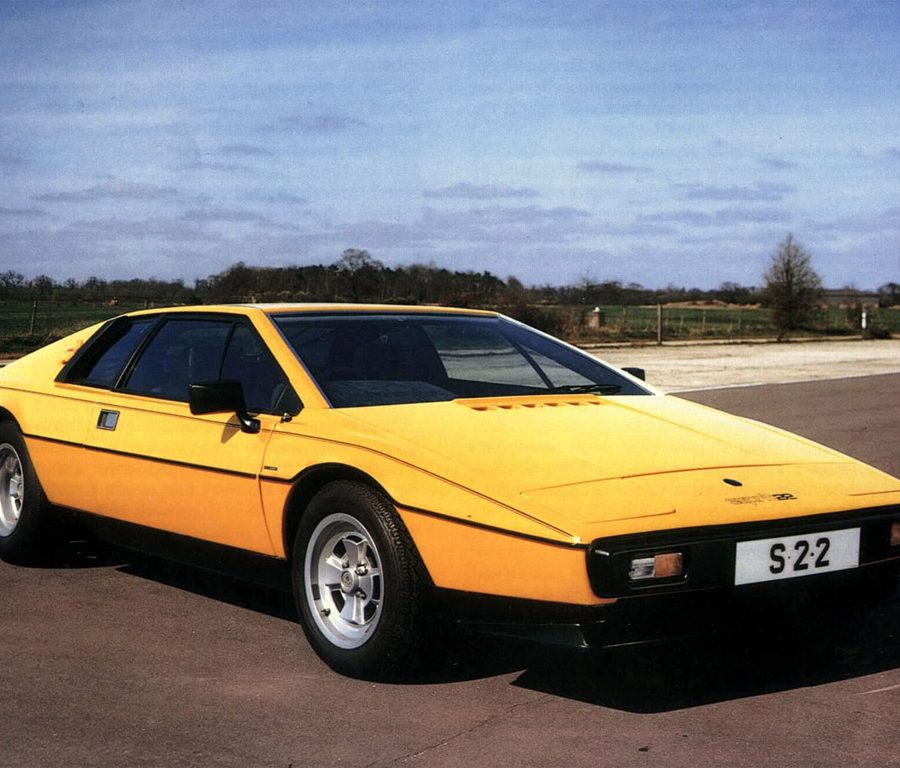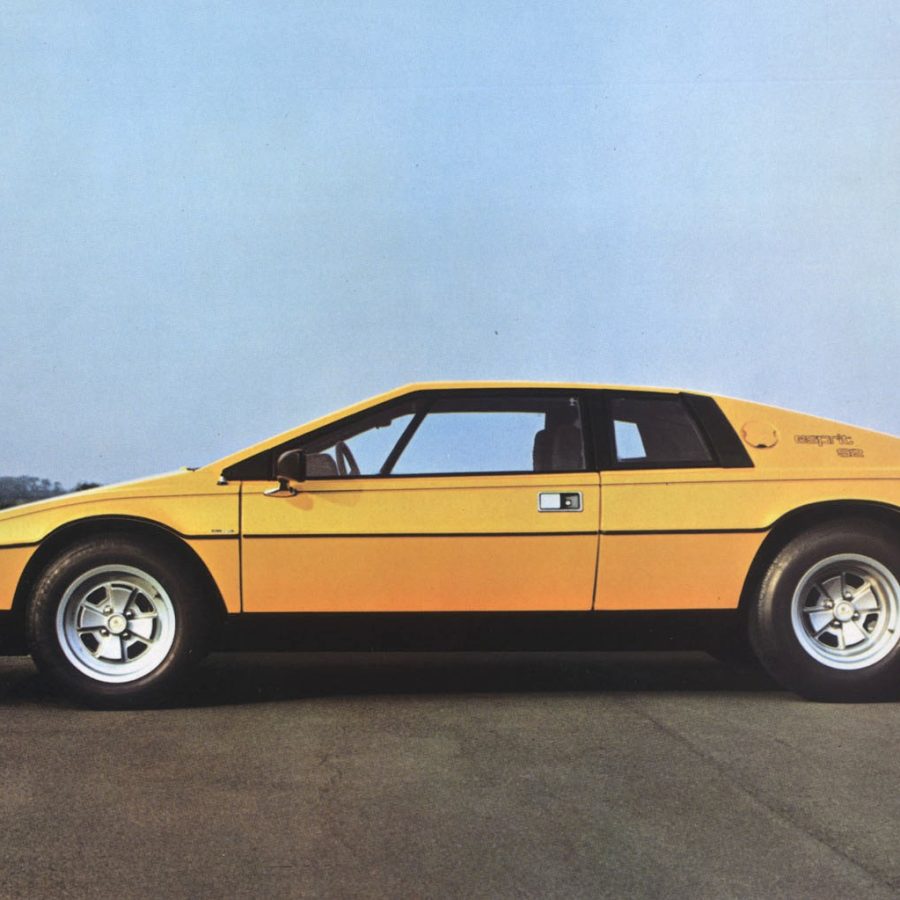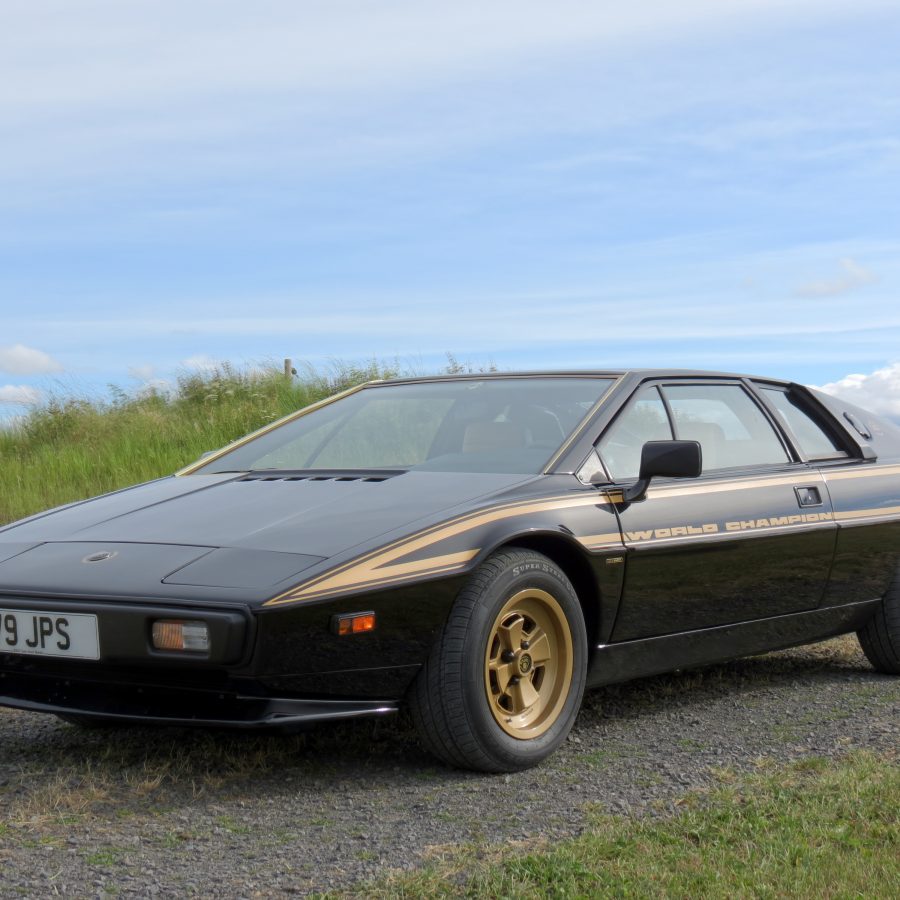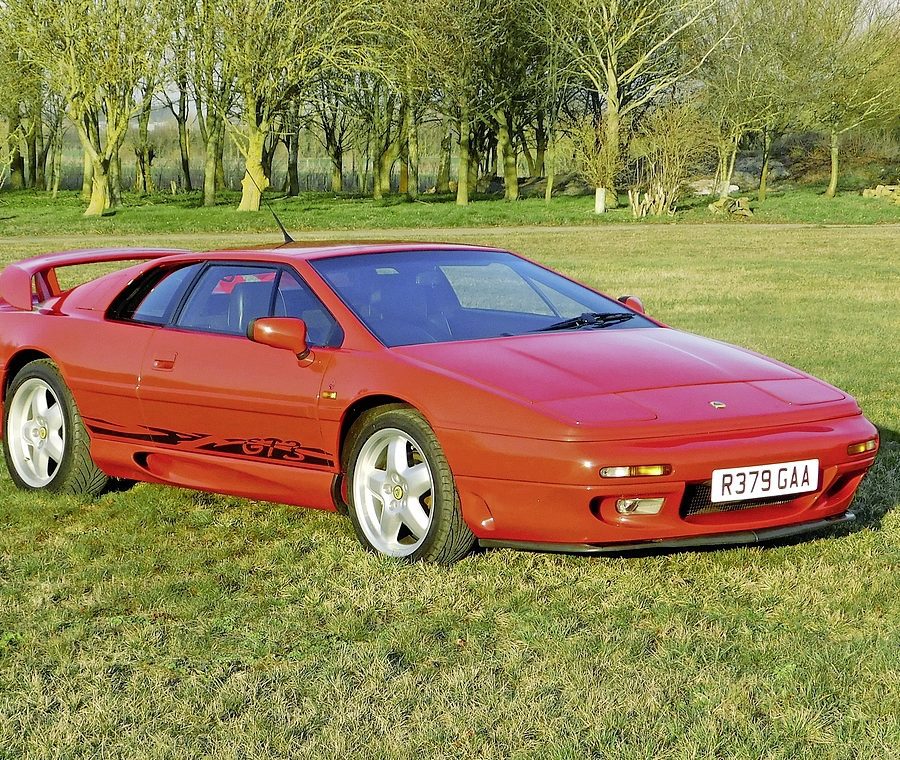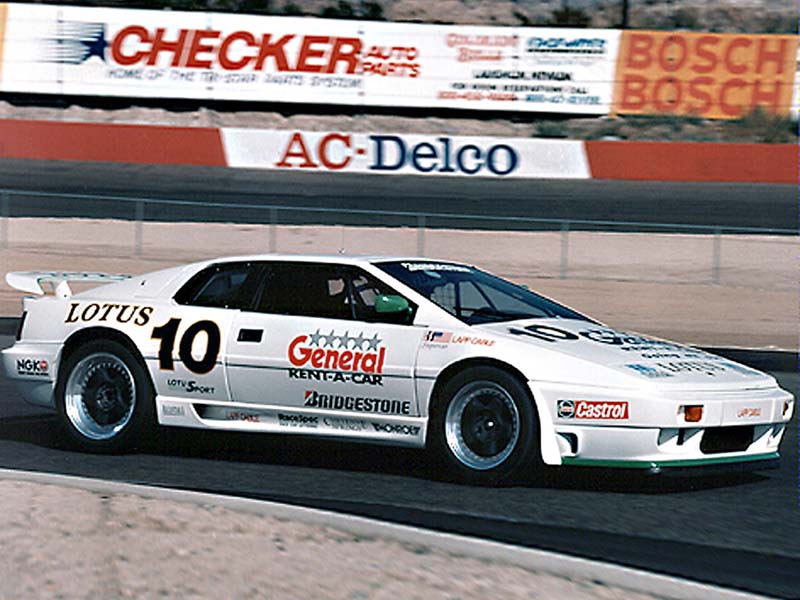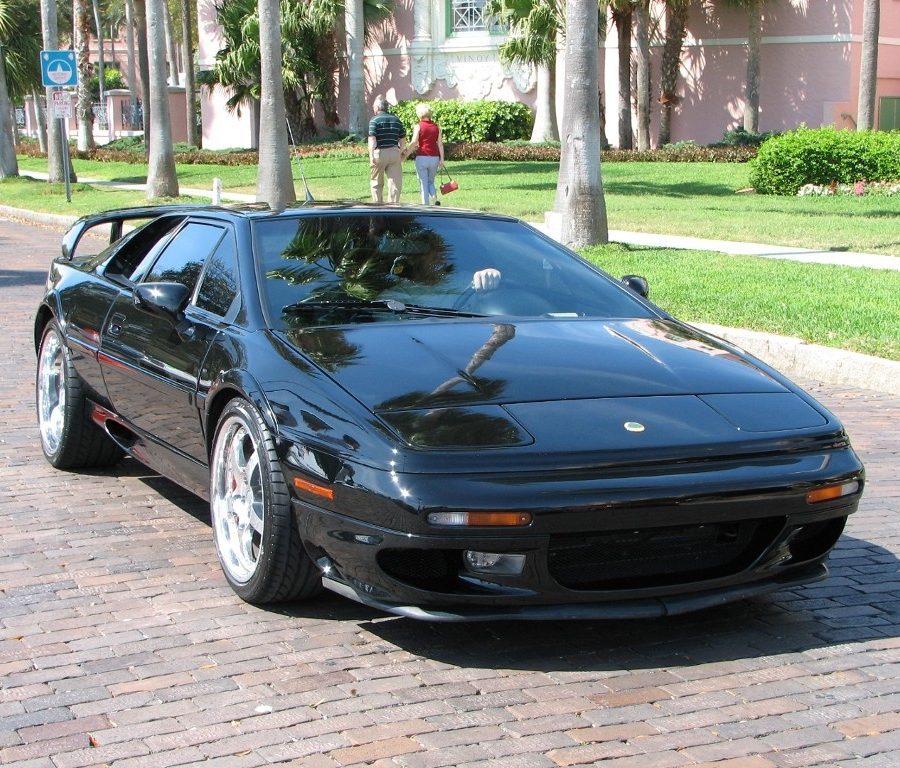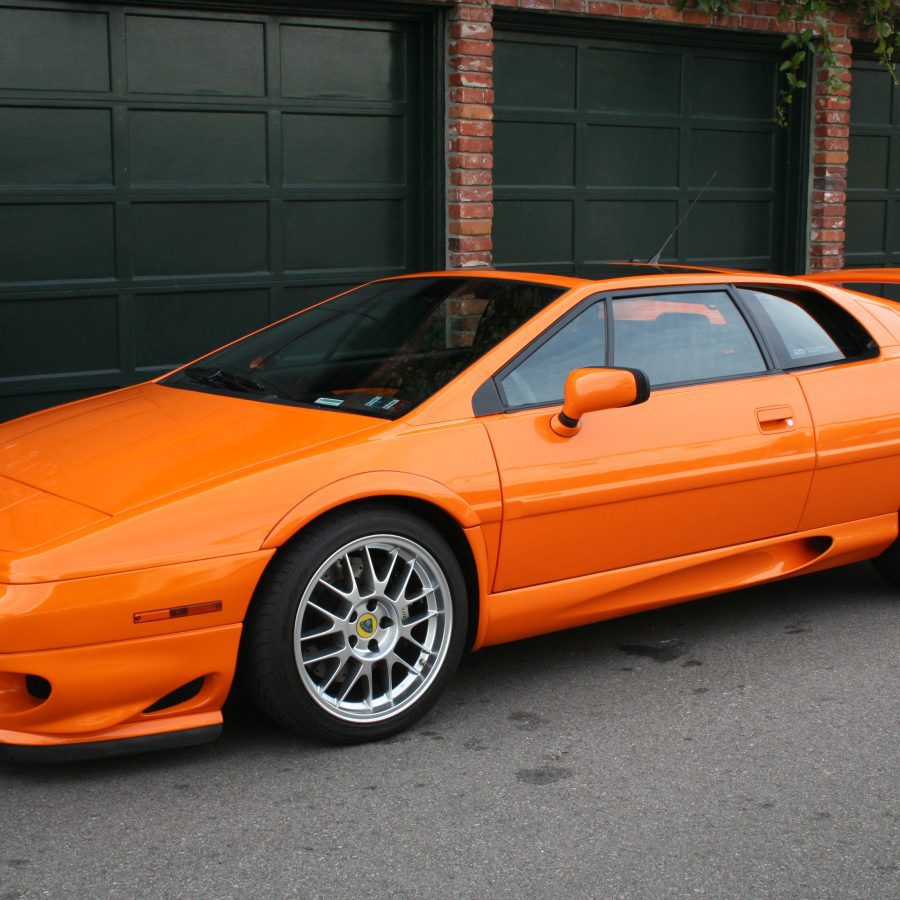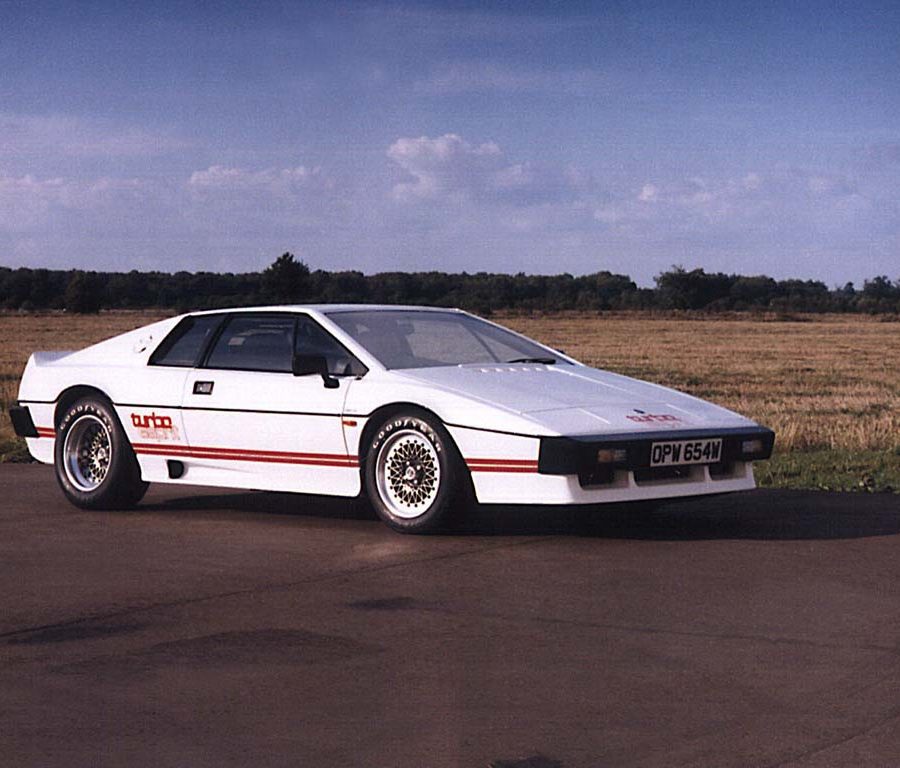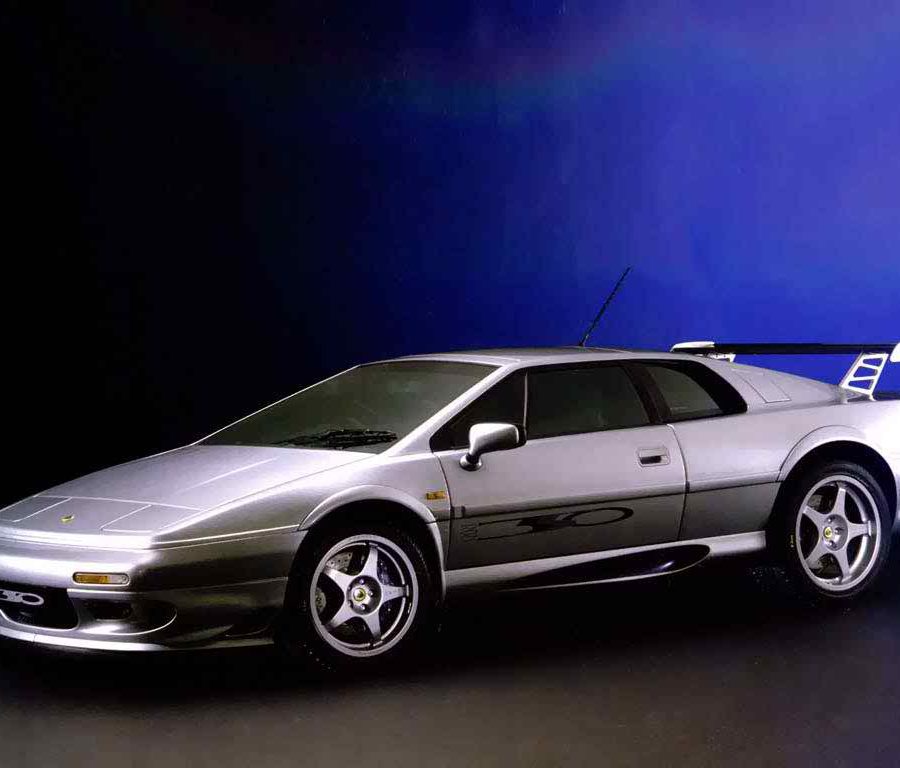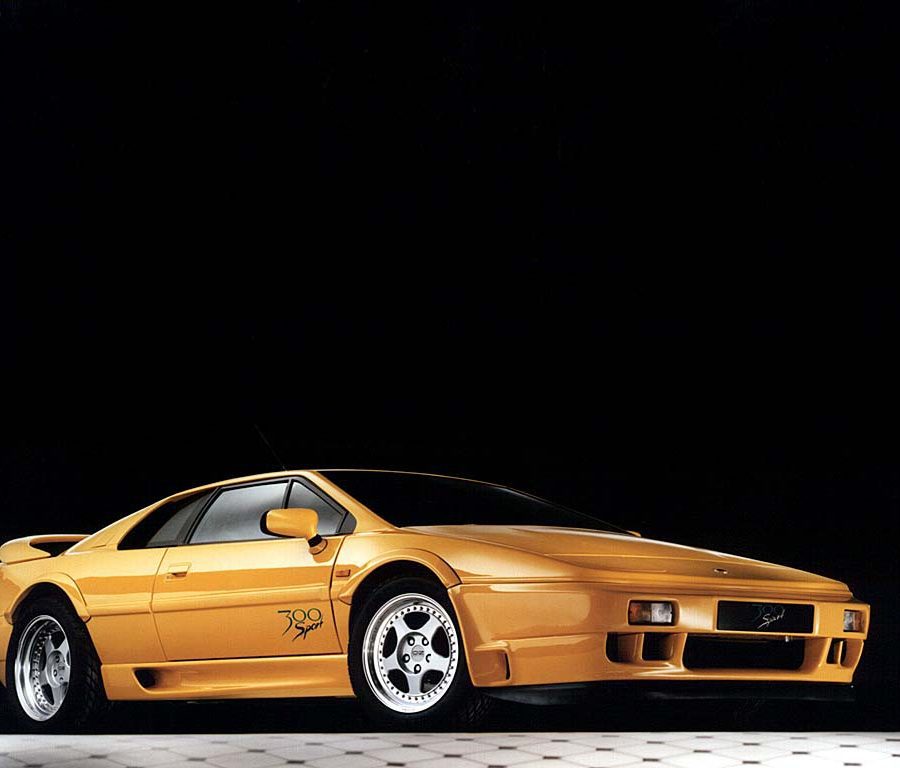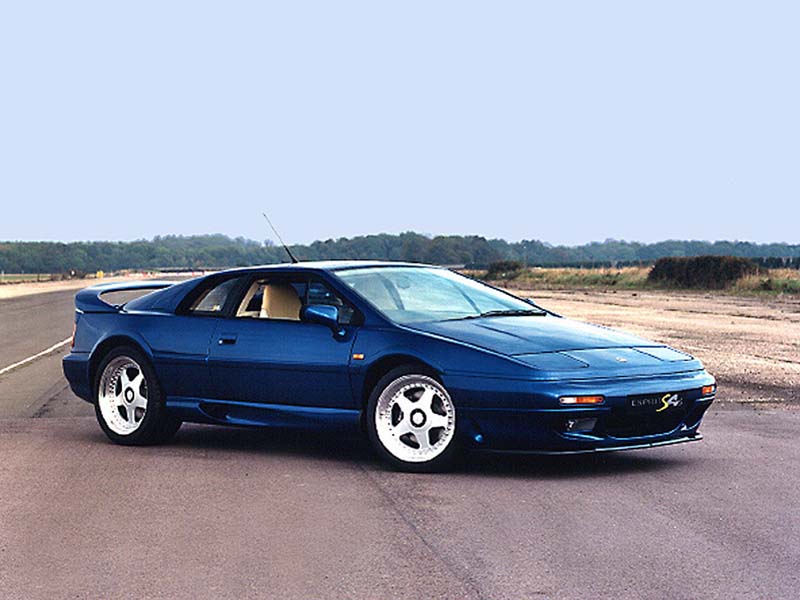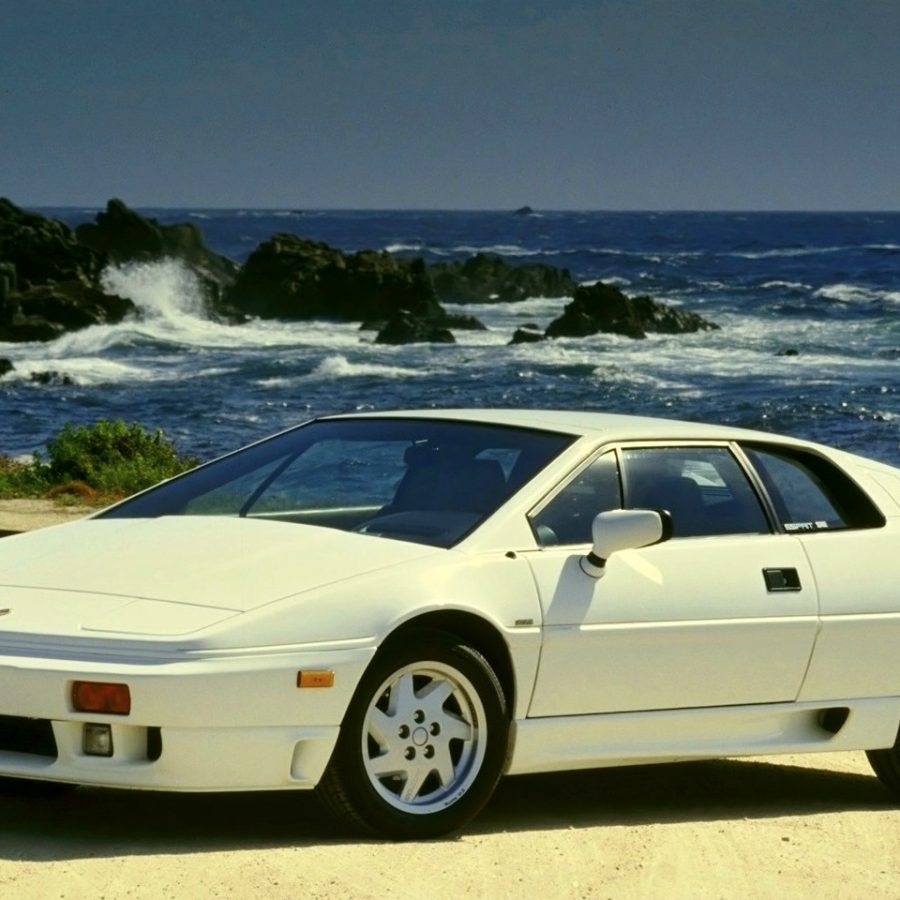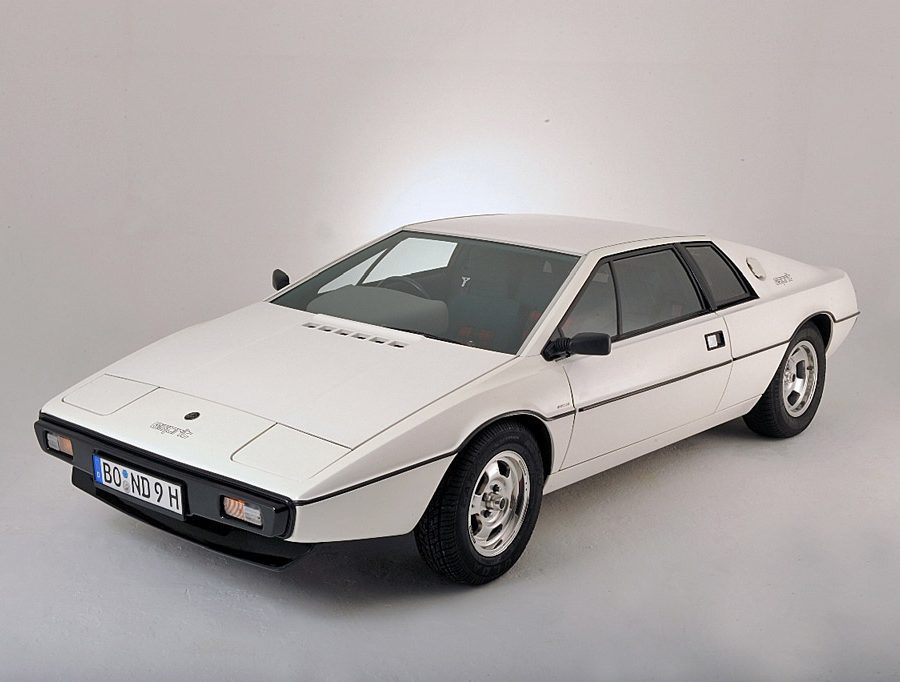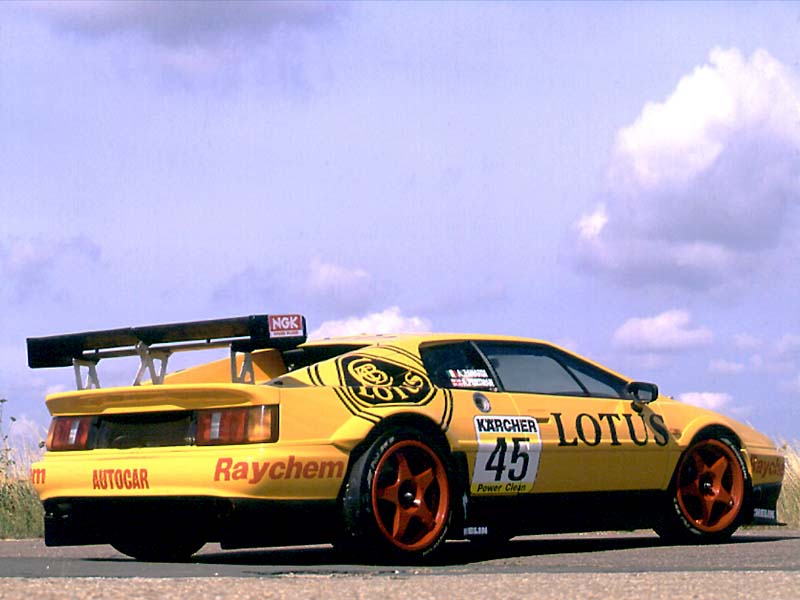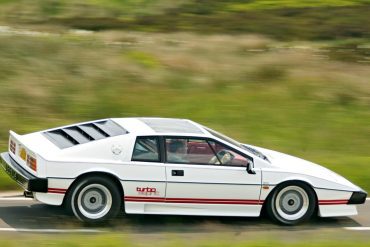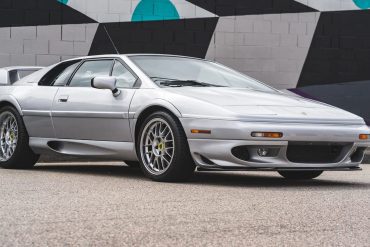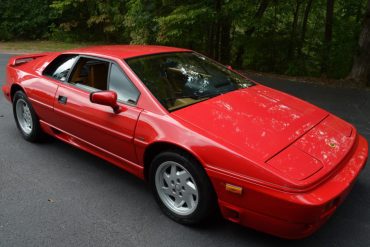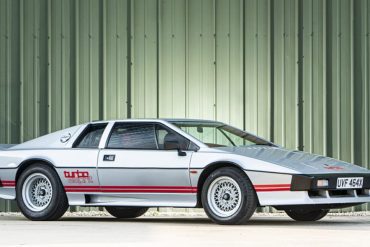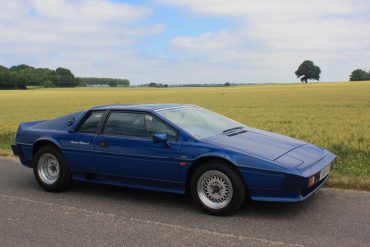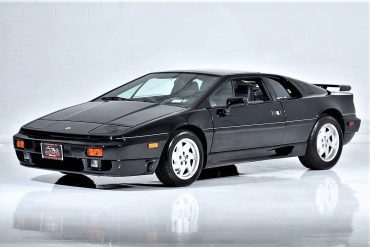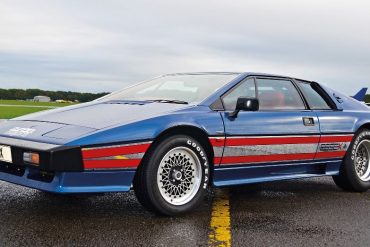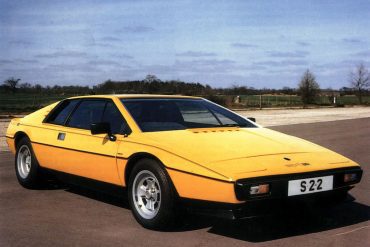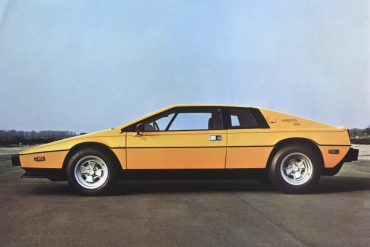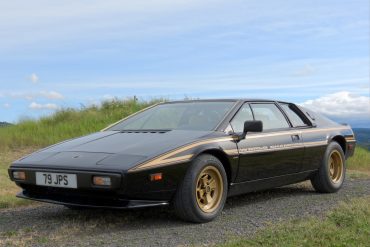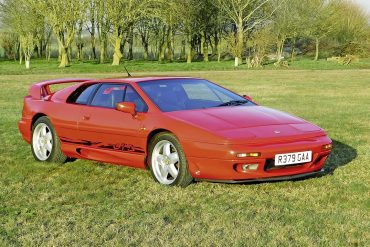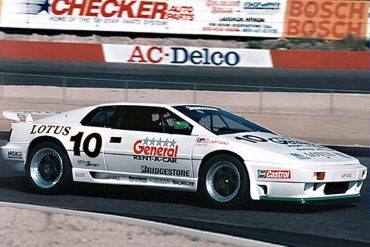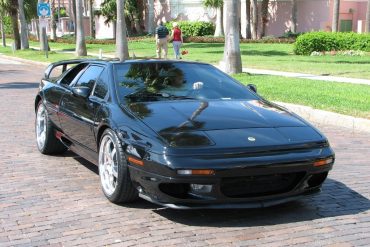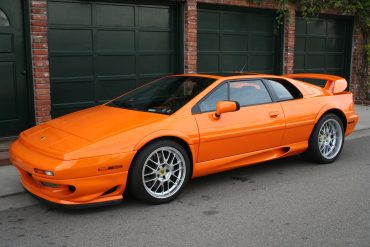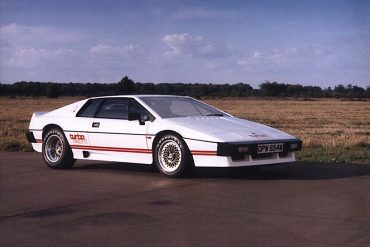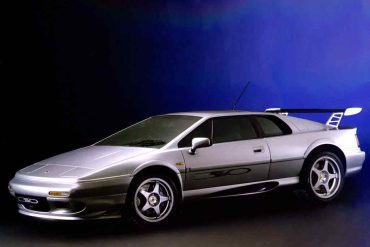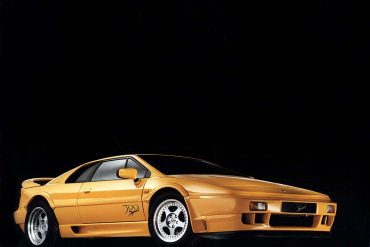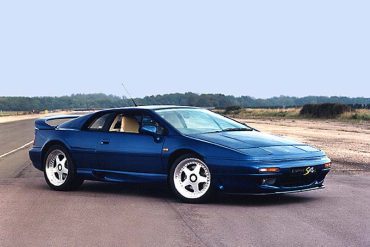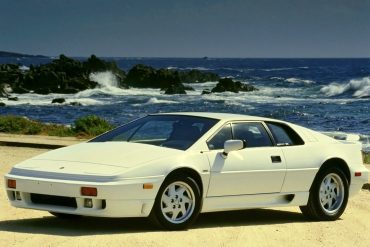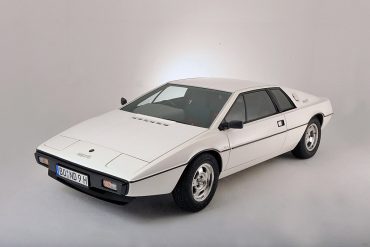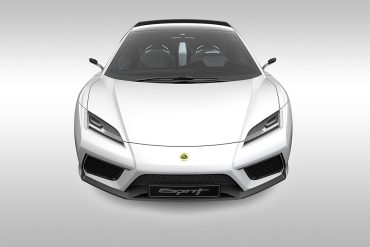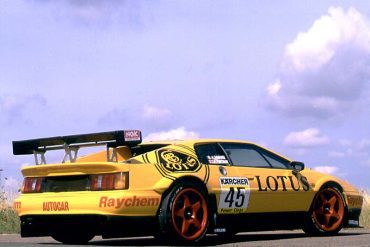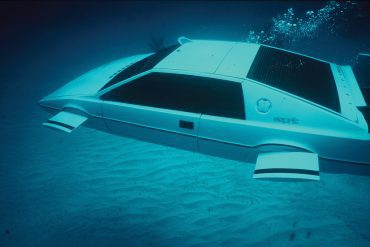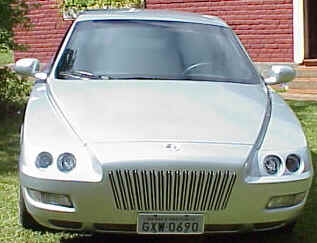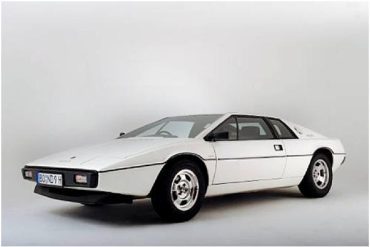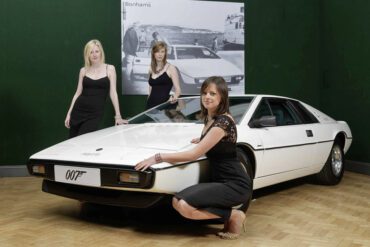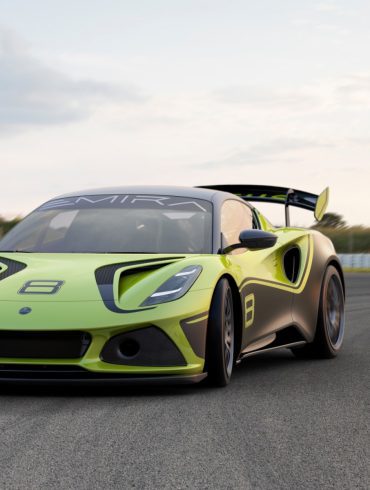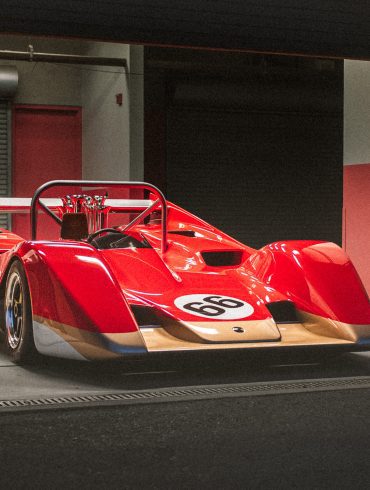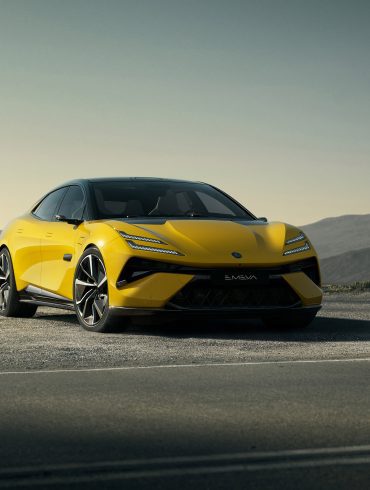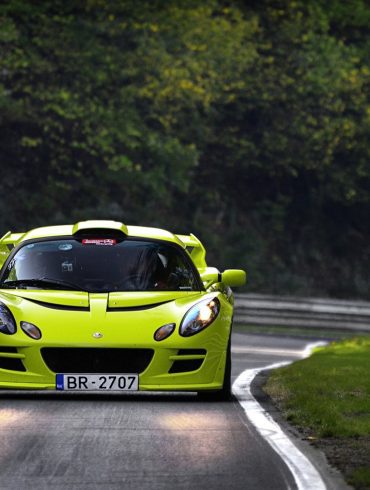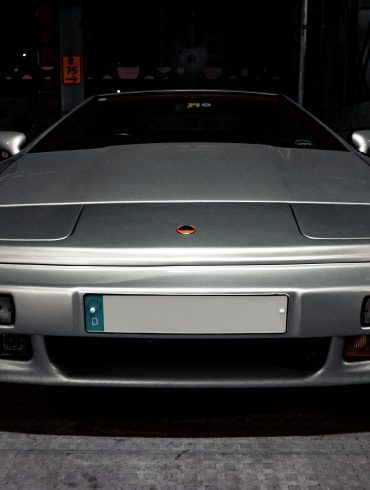1987 Lotus Turbo Esprit HC Years: 1986-1987 Names: Turbo HC / Type 82 Units: 429 HCs Engine: 2,174 cc inline 4 turbo Power: 215 bhp @ 6,000 rpm Torque: 220 lb/ft @ 4,250 rpm 0-60 mph: 5.5 seconds October 1986 to October 1987. The final incarnations of the Giugiaro-styled Esprit had higher compression ratios for the engines was...
Lotus Esprit
A Legacy of Lightweight Supercar Excellence
1976 - 2004
The Lotus Esprit holds a unique place in automotive history. Its sharp, angular design made it a poster car of the 1970s and 80s, and its thrilling performance cemented its status as a true British sports car. But the Esprit's legacy goes beyond good looks; it was a testament to Lotus's engineering ingenuity and focus on pure driving experience.
Supercar by Lotus / Variant List / Models In Depth / History & Evolution / Specs & Performance / Recent News
The Ultimate Guide To The Lotus Esprit: Every Variant, Specs, Pictures, Performance & More
With the Esprit, Lotus entered the modern supercar market for the first time. It’s exotic shape was good enough to extend production from 1976 all the way to 2004. Featured in the 1977 James Bond film The Spy Who Loved Me, Roger Moore showcased the Esprit’s performance by eluding a chasing helicopter. Unlike the Astons of Bond’s past, the Lotus transformed into a submarine and jumped into the sea. The Esprit story started much earlier when Giorgetto Giugiaro debuted the ItalDesign M70 concept at the 1972 Turin Motor Show. This car’s ‘folded paper’ front end was radical, yet production worthy. Four years later, a production version debuted at the 1975 Paris Motor Show. Esprits have always been produced in low numbers, making them rare on the roads.
The Lotus Esprit first went on sale in 1976 badged as the S1 with a 2-litre, 4 cylinder, 156bhp, mid-mounted engine. 25 years later the Lotus Esprit V8 2002 had a 3.5-litre, 8 cylinder, twin-turbo, 350bhp engine. Over the intervening year there were many evolutions of the Esprit, but only one major change in 1987 where the basic look of the Esprit was soften by designer Peter Stevens. This is why people group the Esprit into two different groups, Giugiaro (G Car) or Stevens (S Car). Over its entire production life, under 11,000 were built for the world wide market and this page is our definitive guide to everything you ever wanted to know about the rare, special and ultimately very cool Lotus Esprit. We cover its history, the model variants and much more.
Lotus Esprit Basics
Years: 1976-2004
Assembly: Hethel, Norfolk, England
Layout: Longitudinal, Rear mid-engine, rear-wheel drive
Engine: Various Inline 4 & Turbo Inline 4, V8
Units Made: 10,675
Predecessor: Lotus Europa
Successor: Lotus Europa S
Did You Know?
The Esprit's sharp wedge shape and those classic pop-up headlights made it an instant 1970s icon.
Early Esprit models had fiberglass bodies, contributing to their lightweight construction.
Believe it or not, some early Esprit models were sold in kit form for buyers to assemble themselves!
"It's the most iconic wedge-shaped car ever, and it handles like a dream!"
Supercars.net
A Lotus Supercar
The Esprit Designs
Throughout its 28 year history there were many variations of the Lotus Esprit but all of them can be grouped into two design groups.
The first category is what is commonly referred to as the Giugiaro Esprit; named after the original Italian designer of the car, Giorgetto Giugiaro. The easiest way to identify those cars is if the car was built before 1988 MY (model year) then it is a Giugiaro Esprit. Styling-wise, the Giugiaro Esprit is distinguished by sharp angles and a wedge shape.
In 1988, designer Peter Stevens who is also famous for designing the McLaren F1 supercar softened the crisp edges of the Esprit. It was more modern looking and more sexy from a design perspective.
Hand Built
The Esprit was built completely by hand. The Esprit production line was established back in 1976. Until the end of production in 2004, nothing changed much since those days a quarter of a century ago. There were only 21 people on the line. Each car took about 584 man-hours to assemble.
With multiple people working on the car, total assembly was accomplished in about one week. One car rolled out of the assembly line every business day. Upon completion, each vehicle was driven on the test track.
After the test drive, the car was put on a lift and thoroughly inspected and adjusted. Afterwards, the car was test driven a second time to verify everything was perfect.
Pure Supercar
Although the Esprit was developed over 30 years, the basics remained the same throughout its life, all the way from the S1 through to the very last V8 02. The basics are pure supercar with its two-seater, mid-engined, rear wheel drive layout and that wedge shape.
The Esprit was built around a steel backbone chassis, with the body panels made of Glass Fibre. All Esprit engines were designed and produced by Lotus from the first 2.0 liter inline 4 to the strong V8. Gearboxes on the other hand were sourced from other manufacturers. This was done as Lotus couldn't afford to buy the tools to make their own gearboxes due to the small Esprit sales volumes.
Lotus Esprit Variants
The Lotus Esprit had a long life. It started out being powered by a Lotus/Ford 2.0-liter, naturally aspirated four-cylinder engine making 140 horsepower (in the U.S). Over time, models changed and the Esprit got more powerful. Displacement grew to 2.2 liters, then a turbocharger was added and then the ultimate twin-turbo 3.5-liter V-8 engine was introduced. Below is a list of all the Lotus Esprit variants over its illustrious life.
Lotus Esprit S1 (1975-1978)
Lotus Esprit S2 (1978-1981)
Lotus Esprit S2.2 (1980-1981)
Lotus Essex Turbo Esprit (1980-1981)
Lotus Turbo Esprit (1981-1986)
Lotus Turbo Esprit HC (1986-1987)
Lotus Esprit NA (1987-1990)
Lotus Esprit S3 (1981-1987)
Lotus Esprit Turbo SE (1989-1993)
Lotus Esprit X180-R (1991)
Lotus Esprit Turbo S4 (1993-1996)
Lotus Esprit Sport 300 (1992-1995)
Lotus Esprit S4s (1995-1997)
Lotus Esprit GT3 (1997-1999)
Lotus Esprit V8 (1996-2004)
Lotus Esprit V8 GT (1997-2001)
Lotus Esprit V8 SE (1997-2004)
Lotus Esprit Sport 350 (1999-2001)
Lotus Esprit 02 (2002-2004)
Lotus Esprit X180-R (Type 105) (Race)
Lotus Esprit X180-R1 (Type 106) (Race)
Lotus Esprit GT1 (Type 114) (Race)
Lotus Esprit Models & Variants
In all there, were over 24 variants and derivatives of the Eprit between 1976 and 2004. The list below shows the production models (excluding the GT1 and GT2 cars). Lotus made 10,675 Esprit’s in the car’s 28 year history. There were 5,829 Giugiaro’s style Esprit’s and 4,846 Steven’s Esprit’s made. Below is a list of the Esprit models including production date, engine power, top speed, acceleration and production numbers and other distinguishable features.
Lotus Esprit S1
Years: 1975-1978
Names: Series 1 / S1 / Type 79
Units: 718
Engine: 1973 cc inline 4
Power: 160 bhp @ 6,200 rpm
Torque: 140 lb/ft @ 4,900 rpm
0-60 mph: 8.1 secs
The first Esprit had a Type 907 inline-4 which produced 160 bhp in European markets and 140 bhp in America. The engine was supported by a steel chassis and covered in a sleek fiberglass body. Despite modest power, the styling and handling of the car kept it selling.
Lotus Esprit S2
Years: 1978-1981
Names: Series 2 / S2 / Type 79
Units: 1,061
Engine: 1973 cc inline 4
Power: 160 bhp @ 6,200 rpm
Torque: 140 lb/ft @ 4,900 rpm
0-60 mph: 7.3 secs
By 1978, the Esprit was upgraded Series Two specification including a new front spoiler and rear valance. There were also new alloy wheels, wider seats and new instrument cluster. A Commemorative Edition was made to commemorate Lotus’ 1978 F1 World Championship.
Lotus Esprit S2.2
Years: 1980-1981
Names: Series 2.2 / S2.2 / Type 79
Units: 88
Engine: 2,174 cc inline 4
Power: 160 bhp
Torque: 160 lb/ft
0-60 mph: 6.7 secs
The S2.2 was a stop-gap model introduced in May 1980 whose only major difference from the S2 was a 2.2 L type 912 engine. Engine power output was unchanged but torque rose from 140 lb/ft to 160 lb/ft. The S2.2 received a galvanised chassis. It was rare with only 88 units made.
Lotus Essex Turbo Esprit
Years: 1980-1981
Names: Esprit Turbo / Type 82
Units: 45
Engine: 2,174 cc inline 4
Power: 210 hp @ 6,250 rpm
Torque: 200 lb/ft @ 4,500 rpm
0-60 mph: 6.1 secs
February 1980 to April 1981. Limited-edition Turbo was designated the Essex Commemorative Lotus Esprit Turbo, also known as the Type 82, and was only available in its sponsor’s livery of blue, red, and silver. The intro of this model elevated the Esprit into the supercar league.
Lotus Turbo Esprit
Years: 1981-1986
Names: Turbo Esprit / Type 82
Units: 1,845 (2,274 including HC)
Engine: 2,174 cc inline 4 turbo
Power: 210 bhp @ 6,250 rpm
Torque: 200 lb/ft @ 4,500 rpm
0-60 mph: 5.6 seconds
April 1981 to October 1986. Cheaper ‘production’ version, with reduced trim spec; except for earliest models, all have wet-sump lubrication, BBS wheels. Higher compression ratios for the engines was indicated by the ‘HC’ moniker. Turbo shared common chassis and body with S3.
Lotus Turbo Esprit HC
Years: 1986-1987
Names: Turbo HC / Type 82
Units: 429 HCs
Engine: 2,174 cc inline 4 turbo
Power: 215 bhp @ 6,000 rpm
Torque: 220 lb/ft @ 4,250 rpm
0-60 mph: 5.5 seconds
October 1986 to October 1987. The final incarnations of the Giugiaro-styled Esprit had higher compression ratios for the engines was indicated by the ‘HC’ moniker. High-compression version (up from 7.5:1 to 8:1), with Mahle forged pistons and new exhaust manifolds.
Lotus Esprit NA
Years: 1987-1990
Names: Turbo HC / Type 82
Units: 290 NAs
Engine: 2,174 cc inline 4
Power: 172 bhp @ 6,500 rpm
Torque: 163 lb/ft @ 5,000 rpm
0-60 mph: 5.5 seconds
October 1987 to September 1990. In the latter part of 1987, Lotus produced 2 Esprit models, the top of the range Esprit Turbo and the cheaper Normally Aspirated “Esprit”. The cars were virtually identical visually. Known as the Steven’s Esprits.
Lotus Esprit S3
Years: 1981-1987
Names: Series 3 / S3 / Type 85
Units: 767
Engine: 2,174 cc inline 4
Power: 170 hp
Torque: 160 lb/ft
0-60 mph: 6.5 seconds
April 1981 to October 1987. Significant chassis/suspension changes (as per Essex Turbo) plus many cosmetic revisions. The S3 received an upgraded 2.2 liter Type 912 engine. The S3 gained the new larger bumpers but kept the simpler sill line.
Lotus Esprit Turbo SE
Years: 1989-1993
Names: Turbo SE / Highwing / Type 85
Units: 1,608
Engine: 2,174 cc inline 4 turbo
Power: 264 hp @ 6,500 rpm
Torque: 261 lb/ft @ 3,900 rpm
0-60 mph: 4.7 seconds
The SE had a 2.2 liter turbo “charcooled” engine (first fuel injection water cooled model). The Lotus Esprit Turbo SE produced 264 hp and hit 60 mph in 4.7 seconds and hit 160 mph top speed. There was also a “Highwing” that was same as SE.
Lotus Esprit X180-R
Years: 1991
Names: X180-R / Type 105
Units: 20 (Road)
Engine: 2,174 cc inline 4 turbo
Power: 300 bhp @ 6,800 rpm
Torque: 310 ft lbs @ 4,800 rpm
0-60 mph: 4.1 seconds
The type 105 SCCA car encouraged Lotus to make a new road-going Supercar. Thus the X180R was born. It was based on the the Type 105 having 285 hp. Twenty of these replicas were produced and sold as race-ready, road-going cars.
Lotus Esprit Turbo S4
Years: 1993-1996
Names: S4 / Type 85
Units: 625
Engine: 2,174 cc inline 4 turbo
Power: 264 hp @ 6,500 rpm
Torque: 261 lb/ft @ 3,900 rpm
0-60 mph: 4.8 seconds
With power steering, ABS as standard and an updated roomier cabin, the S4 was the first Esprit that could really be used everyday. Performance was on a par with the outgoing SE but the styling had been updated for the 90s with a sleeker front spoiler and more aero rear wing.
Lotus Esprit Sport 300
Years: 1992-1995
Names: Sport 300 / Type 85
Units: 64
Engine: 2,174 cc inline 4 turbo
Power: 300 bhp @ 6500 rpm
Torque: 287 lb/ft @ 4,400 rpm
0-60 mph: 4.7 seconds
For customers that missed out on the very limited production run of X180Rs, the 300 Sport was offered in 1993. It essentially offered the same package as the X180R racecar. It got a full roll cage, harness and fire extinguisher as well as more power and better handling.
Lotus Esprit S4s
Years: 1995-1997
Names: S4s / Type 85
Units: 367
Engine: 2,174 cc inline 4 turbo
Power: 300 bhp @ 7,000 rpm
Torque: 290 lb/ft @ 3,600 rpm
0-60 mph: 4.6 seconds
The 1995 Esprit S4S combined the best parts of the comfortable S4 and the rapid Sport 300 to produce a very attractive package. Power fell between the two others at 285bhp with a short overboost facility to 300bhp. The S4S was widely acclaimed as an amazing car.
Lotus Esprit GT3
Years: 1997-1999
Names: GT3 / Type 85
Units: 196
Engine: 1,973 cc inline 4 turbo
Power: 240 bhp @ 6,250 rpm
Torque: 216 lb/ft @ 3,750 rpm
0-60 mph: 5.1 seconds
The last iteration of the four-cylinder Esprit was the GT3, a turbocharged, charge cooled variant with the 2.0 L Type 920 which had previously been used only in Italian market cars. The GT3 was produced alongside the Esprit V8. Got some updates for MY 1998.
Lotus Esprit V8
Years: 1996-2004
Names: V8 / Type 85
Units: 1,237 (including GT & SE)
Engine: 3,506 cc twin-turbo V8
Power: 349.9 bhp @ 6,500 rpm
Torque: 295 ft lbs @ 4,250 rpm
0-60 mph: 4.4 seconds
1996 was the year that saw the Esprit finally gain the V8 it had deserved for so long. The exterior was left pretty much alone except for some bigger wheels. The addition the twin-turbo V8 saw a big increase in performance. In 1998 the V8 range was split into SE and GT models.
Lotus Esprit V8 GT
Years: 1997-2001
Names: V8 GT / Type 85
Units: 204
Engine: 3,506 cc twin-turbo V8
Power: 349.9 bhp @ 6,500 rpm
Torque: 295 ft lbs @ 4,250 rpm
0-60 mph: 4.8 seconds
Launched in December 1966. The S1 had a modified Renault 16 1470 cc inline-four engine and a 4-speed gearbox. Minimalist construction was used throughout the first-series Europa. The Series 1 is known as the better drivers car due to its solid construction. Our favorite pick.
Lotus Esprit V8 SE
Years: 1997-2004
Names: V8 SE / Type 85
Units: ~667
Engine: 3,506 cc twin-turbo V8
Power: 349.9 bhp @ 6,500 rpm
Torque: 295 ft lbs @ 4,250 rpm
0-60 mph: 4.4 seconds
The Esprit finally got the V8 it had deserved for so long. The exterior was left pretty much alone except for some bigger wheels. The new twin-turbo V8 saw a big increase in performance. In 1998 the V8 range was split into SE and GT models (the SE was the more luxurious).
Lotus Esprit Sport 350
Years: 1999-2001
Names: Sport 350 / S350 / Type 85
Units: 42
Engine: 3,500 cc turbo V8
Power: 349 bhp @ 6,500 rpm
Torque: 295 lb/ft @ 4,250 rpm
0-60 mph: 4.7 seconds
The Esprit Sport 350 was hailed as the fastest, and the best, Esprit of them all. 160 lbs in weight was shaved from the standard V8. This saving helped the Sport 350 become a performance monster. To cope with this extra performance the Sport 350 received even wider rear tires.
Lotus Esprit 02
Years: 2002-2004
Names: 02 / 2002 / Type 85
Units: 292
Engine: 3,500 cc turbo V8
Power: 349 bhp @ 6,500 rpm
Torque: 295 lb/ft @ 4,250 rpm
0-60 mph: 4.7 seconds
To celebrate 30 years of this performance car, Lotus has given the Esprit a facelift. The redesigned rear panel and light cluster carry over some of the Elise design elements. The front got the lip spoiler from the Sport 350.
"The steering is absolutely sensational – it's quick, direct and gives you plenty of feedback."
EVO Magazine
Lotus Esprit Specs & Performance
A summary of production Esprit specifications and performance numbers.
Error
You are trying to load a table of an unknown type. Probably you did not activate the addon which is required to use this table type.
You are trying to load a table of an unknown type. Probably you did not activate the addon which is required to use this table type.
Lotus Esprit History
Th Esprit was first shown at the Turin Motor Show in 1972. The Cars body was designed by Giorgetto Giugiaro. Ultimately getting to production was harder than expect and the S1 wasn't delivered to customers until 1976. The S1 was quite close in style to the concept car, with a 2.0 liter engine design by Lotus attached to a Citroen gearbox.
The S1 was replaced by the S2 in 1978, with only a few external and internal changes, it was basically a fix for all the S1's problems, the main one being cooling. The S2 was followed in by the S2.2, which was basically an S2 with a 2.2 liter engine instead of a 2.0 liter. Lotus also released a special edition S2 in JPS colors to celebrate winning the F1 championship.
The next Esprit was the turbo in late 1980. This was a very different car underneath, including a new stiffer chassis, and looked slightly different due to a body kit. The first version of the Turbo was the Essex (One of Lotus' F1 sponsors). Carrying a 2.2 liter turbocharged engine and making 210 bhp, it was legitimately fast. In 1981 after the success of the Turbo Esprit, Lotus launched the Esprit S3, which used the new turbo chassis, but carried an un-turbocharged engine and lost the body kit. This is called an NA for normally aspirated, basically meaning no turbo. The S3 was produced till 1987.
The redesign of the body in 1987 by Peter Stevens was coded as the new body Esprit X180 (you may see them called an Esprit X180). The restyled bodied Esprit replaced the Turbo Esprit and S3 with the Esprit Turbo and Esprit NA. These cars were almost unchanged mechanically, but carrying a new Renault gearbox. The Turbo and NA Esprit's are hard to tell apart.
In 1989 Lotus released the Esprit SE, which was the fastest Esprit to date with 264 bhp and a top speed of 165mph. The SE got the 2.2 liter, 4 cylinder, Turbocharged engine, but was now intercooled, using Lotus own Chargecooler. This allowed the engine to produce more power. The SE was also the first model to carry a rear wing, which makes it easy to tell apart from the more basic Turbo.
In 1993 another restyle was done in-house and the S4 was produced. This was the first Esprit to carry power steering, which would now be on every model released. Mechanically the same as the SE, this was an update to make the Esprit look more modern, with new bumpers, spoilers, wheels and interior. This was followed by a limited edition Sport 300, which was a race car for the road. The S4s was a mixture of the two, with an impressive 300bhp, still from the same 4-cylinder engine, released in 1995.
In 1996 the Esprit V8 was launched. Lotus took an S4s and added a brand new 3.5 liter, twin-turbo V8 engine (FINALLY). The V8 engine made 350bhp and had a top speed of 175mph. In 1998 the Esprit V8 got a new rear wing and a major interior overhaul. Lotus now offered two V8s, a cheaper V8-GT which came without a wing and other options and the fully loaded V8-SE. Both carried the same engine and performance, but the SE was more luxurious.
In 1999 Lotus released the Esprit Sport 350 with a limited run of only 50 cars. A track inspired car, with weight saving the main object. This would also be the most expensive Esprit ever but it had tasty stuff like magnesium wheels, a carbon fibre wing and AP Racing brakes. The Sport 350 is the ultimate Esprit. 2002 saw the final update to the Esprit. The Esprit V8 02 was basically a V8-SE for GT money. New wheels, rear lights and the Sport 350's brakes made the 02 quite a bargain. Production of the Esprit stopped in February of 2004.
The Design Evolution
Giorgetto Giugiaro was the man behind the original design of the Esprit (with the help of Colin Chapman and Lotus stylist Oliver Winterbottom) and was based on a lengthened Europa chassis with GRP (plastic) body and a mid-mounted Lotus engine. The Giugiaro Esprit was updated four times in the next 10 years (1976-1987), from S1 — S2 — S2.2 — S3 and finally the turbo Esprit.
The first major alterations to the Giugiaro Esprit outline occurred in October 1987, after around 4,700 Esprits had rolled of the Lotus production line. The brief was that 'A more modern and sophisticated shape was required, but with no need for change to the basic mechanicals'. This challenge was met by Peter Stevens, Colin Spooner and Ken Sears, who did such a great job, it has remained unchanged 15 years later, with only bumper and wing updates really changing the overall look of the Esprit. The Stevens Esprit model ran from 1987-1993 as NA (normally aspirated) — Turbo — Turbo HC and SE.
In 1993 Lotus designer Julian Thomson went to work on the next revamp of the Esprit, badged the S4. With Vauxhall now owning Lotus, their parts bin was set to, with a major update to the interior and only minor changes to the exterior. The mechanicals remain as those in the SE, still with a 4-cylinder 2.2 liter turbocharged and intercooled engine making 264bhp. Minor exterior changes included new front and rear bumpers, front spoiler, indicators, roof mounted aerial, side scoop and Vauxhall door handles. Most eye-catching was the new rear wing, raised to aid visibility. This evolution ran from 1993 to 2001 as the S4 — S4S — Sport 300 — V8 — GT3 — Sport 350 — V8-GT — V8-SE.
The last rethink was released in 2002 by current Lotus designer Russell Carr, referred to as the 'Facelift Esprit'. Again no changes were made to the mechanicals of the V8, and the exterior only receiving new rear lights and the Sport 350 front spoiler. A few interior updates were made, but the basis of the update was to reduce the Esprit to one full spec model at a reduced price, making the Esprit a more attractive option against other marquees.
Esprit FAQs
Which Lotus Esprit Should I Buy?
Two recommendations. Esprit GT3 - Lotus launched the Esprit GT3 in 1996. This was to be an entry level Esprit with no options as standard and only a 2.0 liter turbo engine. Light weight and well-balance with 240bhp the GT3 became known as the Drivers Esprit. Esprit Sport 350 - In 1999 Lotus released the Esprit Sport 350 with a limited run of only 50 cars. A track inspired car, with weight saving the main object. This would also be the most expensive Esprit ever but it had tasty stuff like magnesium wheels, a carbon fibre wing and AP Racing brakes.
How Much Is a Lotus Esprit?
The truth is that with such a long lifecycle and expansive list of variants, the pricing is all over the place. At the lower end you can find a decent spec car with not insane mileage in the lower $20,000 range.
How fast is the Lotus Esprit?
Luckily our specs section tells you. The original Lotus Esprit S1 had a claimed 0–60 mph time of 6.8 seconds, but real world testing pegged it at 8.1 seconds. Top speed was a claimed to be 138 mph but was closer to 130 mph. The fastest Esprit was the Esprit V8, helped by that wonderful twin-turbo V8. It ran the 0-60 mph in 4.4 seconds and had a top speed of 172 mph.


